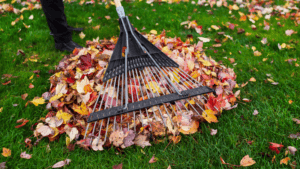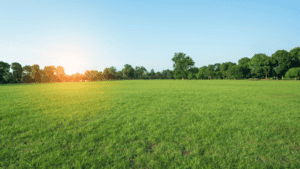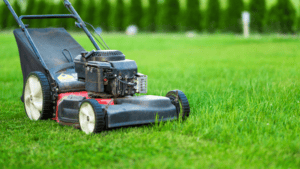No one enjoys sacrificing a weekend to raking, weeding, and winterizing, but fall yard cleanup is a necessary evil. It’s important to clear debris away from your yard and landscaping beds before snowfalls and a deep freeze sets in. Make your end-of-season maintenance chores go faster with a few of these simple tips and tricks.
- Clean out debris
Fallen leaves and weeds are the perfect places for unwanted guests to settle in for the winter. Clear out flower beds to keep the critters away. Keep an eye out for your rose beds, as their debris can hold disease over the winter.
- Trim rogue branches
Trim those dead, damaged, or diseased branches you didn’t get to during summer. Make sure you keep an eye out for branches that may cause trouble during winter. You don’t want any branches breaking and falling during the snowfall to come.
- Clean out the gutters
Not all fall cleanup is in the yard. This is the perfect time to clear leaves and other debris from rain gutters. Check for proper drainage, clear out any blockages, and rinse with a hose.
- Aerate and Feed the Lawn
Break up the soil to keep water from pooling and allow nutrients to reach the roots over the winter. A pitchfork will do the job for small yards, but larger yards may require a walk-behind aerator. Once your yard is aerated add a fall lawn fertilizer with high phosphorus content to encourage root growth and enjoy a full, green lawn come spring.
- Rake and mulch
Don’t let fallen leaves get the best of you; if left unattended they can suffocate the grass. Rake them up, shred them, and use them as mulch for young trees, shrubs, and flower beds. You might even be able to skip the raking part if you use a lawnmower to mulch the leaves in your yard.
- Don’t Stop Mowing Just Yet
Fall yard maintenance is all about helping your lawn finish strong so that it can stand the below zero temperatures ahead. It’s important to continue watering and mowing your lawn as needed. Once the season draws to a close and the temperature begins to drop, you should set your mower’s blades to their lowest setting for the last two cuts of the season. This will allow more sunlight to reach the crown of the grass and allow the soil to dry out faster in the spring.
- Divide and cut back perennials
If your perennials really took off this year, go ahead and spread them out. Divide the plants and add them to other flower beds, this saves money and time in the spring. Fall-blooming perennials like chrysanthemums shouldn’t be divided now—wait and divide them in the spring.
- Protect cold-sensitive plants
Keep sensitive perennials, shrubs, and roses in top shape through the cold days of winter. Add mulch to the base and wrap plants in cloth barriers to prevent damage from freezing. Depending on the hardiness of the plant and your climate, you can use a single sheet or blanket or wrap them in a combination of cloth and plastic.
- Plant bulbs, shrubs, and fall annuals
Some plants do best when planted in the fall. If you want to add new shrubs or spring bulbs like hyacinth, now is the time to get them in the ground. Fall annuals like pansies are also a great addition to keep some color in your yard as other plants go to sleep.
- Protect the deck
Prevent the growth of mold and mildew by giving the deck a good power wash. If you don’t have a pressure washer, you can rent one from a garden store. Once the deck is clean and dry, add a weatherproofing stain to protect the wood from moisture damage over the winter.



